

The trip to Buscalan, Kalinga Apayao meant two things for me. It was a return to the mountains – my rambling roots, having started out as a mountaineer before I took to the ocean. It was also my chance to get tattooed by Apo Whang Od, the last mambabatok (traditional tattoo artist).
And while the rest of my tattoos marked personal milestones, this one was going to be a highlight as it was. A tattoo by Whang Od, the 95 year-old Kalinga woman who shot to fame less than a decade ago when her artistry was featured in Lars Krutak’s Discovery Channel show, Tattoo Hunter.
Buscalan and the Whang Od Phenomenon

The trip was ill-timed. It fell on days when Typhoon Goni / Ineng battered northern Philippines. We had gone ahead, following forecasts that predicted rainfall only in the extreme north areas of Batanes. The predictions were wrong, and we ended up spending four days in rain-soaked Buscalan. We arrived a day ahead of the storm, and left as it winded down.
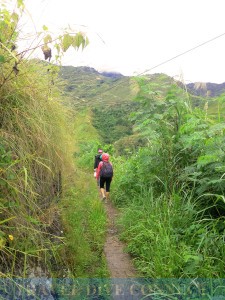
Surprisingly, travelers arrived every day, even during the brunt of the storm. I asked a few locals about this – over beer tagays, of course – and they said that days without visitors were rare. If it weren’t foreign tourists, Filipinos came. They remembered guests who made their way up from faraway Visayas and Mindanao. They recalled a weekend when there were 100 visitors. Each household had homestay guests.
Most made the trip to get tattooed by Apo Whang Od. The 2009 Lars Krutak feature and its subsequent book, Kalinga Tattoo: Ancient and Modern Expressions of the Tribal, shoved the gentle Whang Od and the tranquil Buscalan into the limelight. Follow-ups from local and foreign media came, one after another – and with these were throngs of tattooed travelers who now wanted “the real deal.”
I saw this for myself when it was our turn to get tattoos. Apo Whang Od and her granddaughter, Grace, had a full day that started at 7AM. Sessions were held at a makeshift tattoo nook that was tucked away from the wind and the rain. We got there at 10:30AM and there was a queue of about 7 people.

It was a cold and stormy morning and our guide, Gilbert, was unsure if Whang Od would want to attend to the guests. But she was there, jacket on and silently focused on work. She took a short break before our turn. Because she didn’t speak Tagalog, she gestured shyly to the crowd, moving her hand to her mouth. She was ready for her first meal. They ended sessions at 4PM to give Whang Od time to tend to her home and her rice field.
This was a typical day for the old woman for about 8 years now. Apo Whang Od: cultural icon and the last mambabatok. She put Buscalan on the traveler’s map. Tourism was now a major income generator for the community and Tinglayan, the municipality it belonged to.
Batok and the Kalinga Culture
Tattooing was a natural language of the skin that gave voice to the ancestors and their descendants who attempted to emulate them by sacrificing their own bodies to make them more lasting and sacred. – Lars Krutak, The Last Kalinga Tattoo Artist of the Philippines (2009).
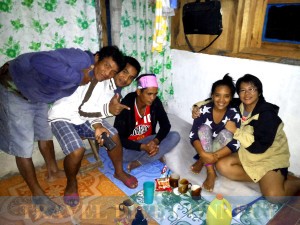
The night before the tattoo session, Grace warned me that Apo Whang Od’s taps were lethal. The old woman hit harder – you bled more. So, we agreed that I’d get a “mix” tattoo, one started by Grace and finished by Whang Od.
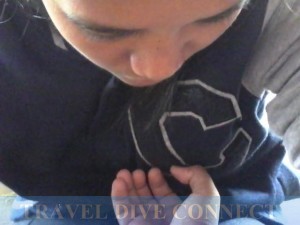
This was a good idea. Grace sat me down and traced my selected design. I chose the Hinuliab, which, according to the Kalinga Tattoo book, meant either “to release the fire from within” or “to ask for blessing.” She then began to tap. Soft taps to ease me into the traditional Kalinga way of tattooing.
When she was done, I moved over to Apo Whang Od’s side. I’d been waiting for this, an audience with the old woman. Of course, with the people around me, my swelling arm and the mythical aura she exuded, I just gushed. Gilbert translated my question: what do you think about being so popular in Manila? And, I blabbed about bringing her her favorite Cloud 9 chocolates.
I stopped there. She did hit harder. Each tap buried the thorn deeper into my skin. I hoped being quiet would appease her a bit. Stop being makulit, Roda!
The men and women before me had to be of Kalinga blood to even qualify for a tattoo. Females declared their womanhood and hoped for fertility through their tattoos. Men had to fight and kill to deserve theirs. There were very few left of these warrior-men, many of whom received their tattooed privilege by fighting the Japanese during World War II.
About the warrior-men, Krutak wrote: “But soon enough he would walk among the countless generations of tattooed Kalinga warriors that came before him. He would bear visual proof of his martial exploits in the form of an indelible tattoo that would confer to him special privileges and lifelong respect from other members living in his community.”
Whang Od once said: “Tattooing is a ritual and serious religious experience. The spirits expect Fanah to act bravely. If he doesn’t, they’ll inflict death and destruction on the community.” *
Krutak himself underwent so much more than I did during my 4 days in Buscalan. He lived and immersed himself in community life for almost a month. He worked in the rice fields, pounded rice, bonded and hunted with the men, and learned about the batok art from the tattoo master. He joined festivals and rituals; and worked to deserve a tattoo from Whang Od.
Mass Tourism’s Indelible Mark and Buscalan’s Future
One could only imagine the time when the Kalinga tattooing tradition shifted as people began to follow the Tattoo Hunter’s ink trails.
None of the locals that I talked to could recall Apo Whang Od’s dilemma as one tattooing request came after another. The Discovery Channel episode’s reach was massive and global. Alongside modern tourism’s preference for access and affordability, Buscalan became a destination, and Whang Od suddenly had an audience to please.
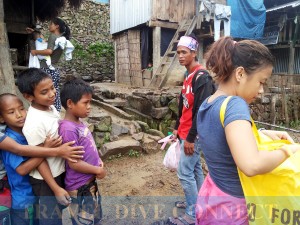
The people of Buscalan were aware of how much had changed. A few cement homes had been built next to native ones, mainly to accommodate travelers. Children asked for candies from visitors, for which their caretakers apologized, in case we felt pestered. Many Buscalan and Tinglayan locals joined the tourism workforce, and earned their keep as guides, motorcycle drivers, and canteen, inn and homestay operators, among others.
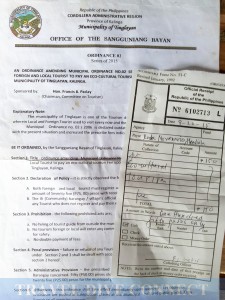
A viable local economy had risen up, with an old woman at the center. And sustaining this was now an issue.
What would happen once Whang Od felt she wanted to rest from working? Would Grace – an impressive young woman with a genuine love for the batok art and an acumen for business – be able to take over? Would people still come to get their traditional tattoos?
Remember Her Legacy
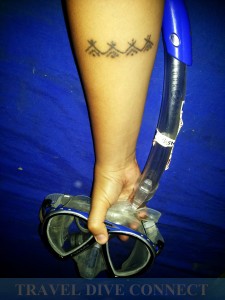
I chose a visible portion of my arm for my tattoo precisely because this tattoo was my most painful one. It was co-created by a cultural icon. It was something I’d be proud of. Others before me had had the same sentiment – I’m sure.
But what did I really have on my skin? What cultural tradition had I appropriated out of vanity? Out of the need to showcase my Filipino-ness even with a tradition that was never truly mine.
My tattoo has healed, and I am just waiting for the charcoal to seep out and for the outer skin to peel. But Apo Whang Od’s mark remains raw. My ego has been subdued; and I’ve become aware of the legacy I was allowed to partake of. My skin bears her artistry and generosity. It bears the sacred traditions of the Kalinga tribe and Buscalan’s roots. And just as the tap tap tap of her bamboo stick remains fresh in my head, I will always remember.
*You can watch the full episode of Tattoo Hunter here:
References:
Kalinga Tattoo: Ancient and Modern Expressions of the Tribal. Munich: Edition Reuss. http://larskrutak.com/the-last-kalinga-tattoo-artist-of-the-philippines/
Cultural Appropriation. Wikipedia.
https://en.wikipedia.org/wiki/Cultural_appropriation
